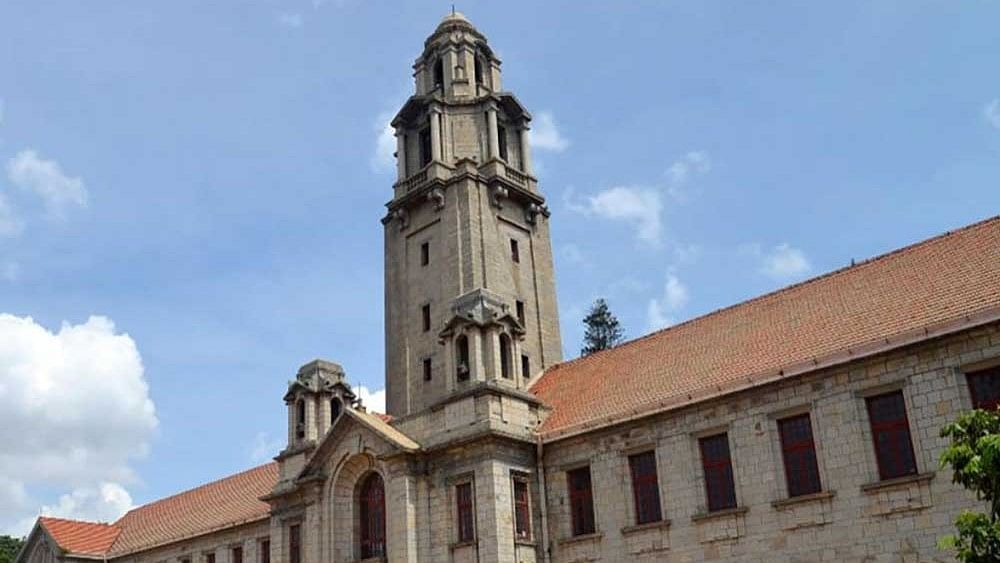
The Indian Institute of Science (IISc), Bengaluru.
Credit: DH file photo
Researchers at the Indian Institute of Science (IISc) have pioneered breakthrough materials and processes that could bring down the building industry's carbon emissions and supplement sustainable construction practices.
The Centre for Sustainable Technologies in IISc has utilised 3D-printable material formulations with industrial by-products, including construction and demolition wastes (CDW), blast furnace slag, and fly ash, for carbon sequestration.
Carbon sequestration is the process where atmospheric carbon dioxide is captured and stored. The method aims at reducing the amount of carbon dioxide in the atmosphere.
The multilateral project is funded jointly by the Department of Science and Technology (DST) under the trans-national platform of Accelerating Carbon Capture, Utilisation and Storage Technologies.
The 3D printable material formulations have the potential to be used in fabricating walls, slabs, and various other building components, a DST statement said.
“The developed material, utilising an optimised process of accelerated carbonation curing, can store 35-40 per cent of carbon dioxide by mass of cement,” DST said. Small crystals of carbonate minerals formed during the sequestration can also enhance the engineering performance of the material.
The innovation could replace up to 75 per cent of natural sand in cement-based construction materials. The research has been published in the journal — Construction and Building Materials.
India’s cement and brick manufacturing sectors contribute 200 to 250 million tons of carbon dioxide annually. Accelerated carbonation curing leverages carbon dioxide-rich industrial flue gases to mineralise carbonates within construction materials, and ensures a robust carbon dioxide storage mechanism. The process is critical to curbing the carbon dioxide emissions that are inherent in material production.
IISc leads a bilateral Indo-US consortium, including IIT-Roorkee, Sandia National Labs (USA), and Oregon State University (USA), which is working on innovation in the design of building components via 3D printing and the development of new materials to maximise carbon sequestration, DST said.